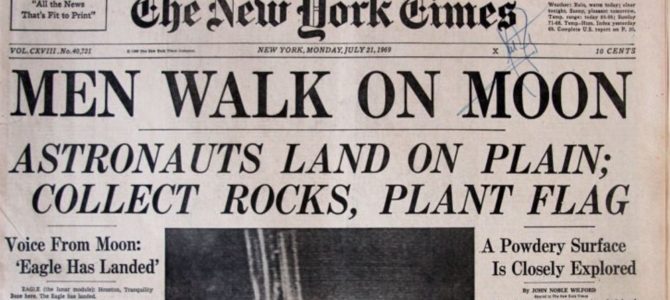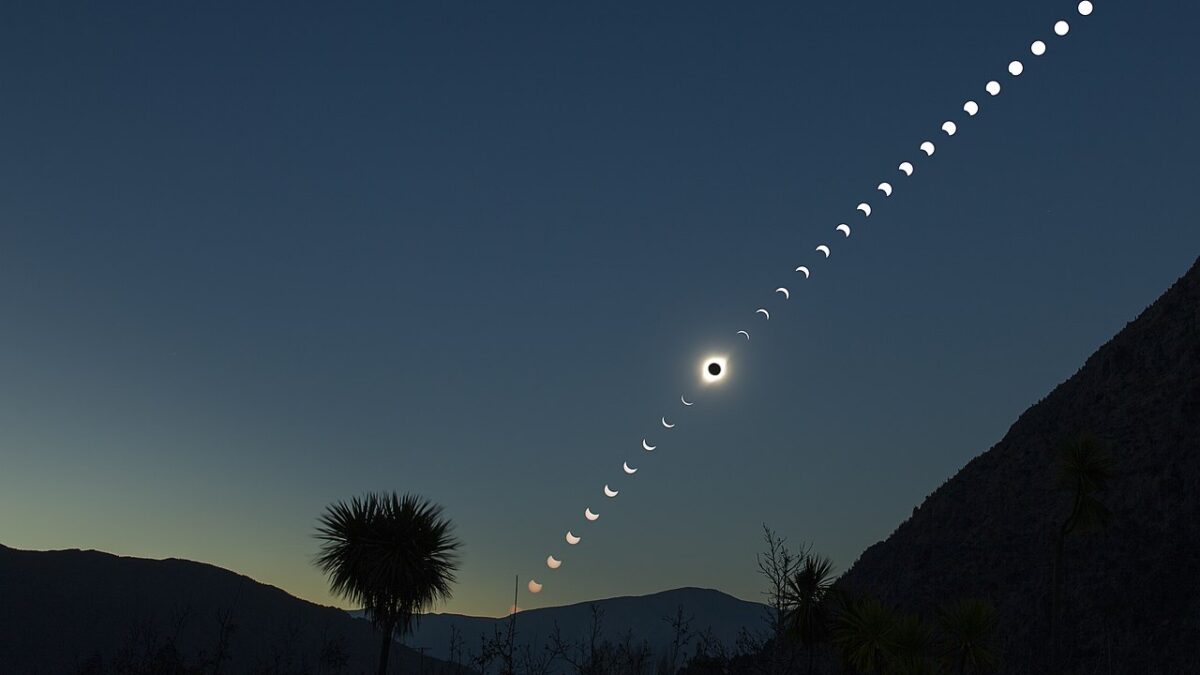
This weekend, Americans will celebrate the 50th anniversary of the Apollo 11 moon landing, an event widely considered to be a pinnacle of human achievement, let alone American ingenuity. So, of course, it falls to the flagships of establishment journalism to complain about how white men dominated the program.
The culture that put men on the moon was intense, fun, family-unfriendly, and mostly white and male https://t.co/x5vQBuU4IN
— The Washington Post (@washingtonpost) July 16, 2019
The Apollo program was designed by men, for men. If we do not acknowledge the gender bias of the early space program, it becomes difficult to move past it. https://t.co/Mt7rVLgAaf
— The New York Times (@nytimes) July 17, 2019
Put Historical Events in Context
In the Washington Post, style writer Karen Heller jokes, “In archival Apollo 11 photos and footage, it’s a ‘Where’s Waldo?’ exercise to spot a woman or person of color.” Without knowing it, she indicts America more than she does the space program.
Keller writes: “As NASA worked relentlessly to fulfill John F. Kennedy’s goal of landing a man on the moon by decade’s end, it turned to the nation’s engineers. Many of them were fresh out of school, running the gamut from mechanical to electrical engineers, because that’s mostly what was taught in universities, and almost exclusively to white men.” She fails to explain how the preponderance of engineers being white men was NASA’s fault or how America was to land on the moon without engineers.
Keller fills her feature with cultural references of 1969: the Nixon administration, Vietnam, television’s “I Dream of Jeannie,” Zager and Evans’ “In the Year 2525,” Stanley Kubrick’s “2001: A Space Odyssey,” and so on. With one arguable exception — “Star Trek” — each illustrates a culture dominated by white males (even the Stonewall riots were technically dominated by white males, despite recent historical revisionism on the subject). It would be surprising if the Apollo program were an exception.
She also includes a later cultural reference to “Hidden Figures,” a 2016 film that tells the story of black female mathematicians and engineers at the Langley Research Center in a unit segregated by race and sex. The movie focuses on Katherine Johnson, whose calculations of orbital mechanics were key to the success of early American spaceflights; she was awarded the Presidential Medal of Freedom in 2015 for her work.
The film grossed more than $169 million domestically, won a number of awards, and garnered even more nominations. That NASA and its contractors had southern facilities in the early-to-mid-1960s reflecting the racism and sexism of the place and time (with improvements over time) is news only to people actively avoiding the subject.
Understand the Culture
Then again, for all of the pop-cultural references in the feature, Keller seems to have little grasp of what American culture was like in 1969. She writes: “The space program imagined the future. Yet the community of trim haircuts, shaved chins, white shirts (with contractors’ company badges emblazoned on their pockets) and pressed slacks, led by many veterans of World War II, seemed decades removed from the prevalent culture that was shaggier, angrier and sometimes stoned.”
Put aside for the moment the practicality of having the “turn on, tune in, drop out” crowd trying to put anyone of either sex on the moon at any time. The prevalent culture of 1969 was not shaggy, angry, and stoned. Not to belabor the point, but hippies were dubbed the “counterculture” for a reason. They constantly complained about “The Man” for a reason.
Keller seems blissfully unaware that the No. 1 hit immediately preceding “In the Year 2525” was Henry Mancini’s entirely conventional “Love Theme from Romeo and Juliet.” Or that two months later, The Archies’ brilliantly vapid “Sugar, Sugar” would top the Billboard Hot 100. Or that Zager and Evans keeping Creedence Clearwater Revival’s “Bad Moon Rising” out of the top spot was all too telling about where American culture really was in July 1969.
Don’t Blame NASA
The New York Times piece, by science fiction author and puppeteer Mary Robinette Kowal, is marginally better when it focuses on current-day problems with the space program. But the article predictably treats the past almost entirely as a bad influence on the present and future.
Kowal spends time on the story of William Randolph Lovelace, who designed the tests for the Mercury astronauts and also found that women might be better suited for space than men. Kowal writes: “Despite all this, the tests were stopped. The women, later known as the Mercury 13, went to Congress to try to fight the ruling, but by then, the United States was in a moon race.”
The so-called Mercury 13 were the subject of a recent Netflix documentary pushing this narrative. The Verge, a branch of Vox Media, fact-checked the film. Margaret Weitekamp, a historian who wrote a book on the subject, told The Verge even the name was “ahistorical and misleading.” NASA did not start the program nor shut it down. Jacqueline Cochran, an accomplished pilot, had funded the tests — and she ultimately testified against the complaining women before Congress.
In Weitekamp’s opinion: “The moment when someone might have been able to be persuaded to do the experiments of seeing how a woman would fare flying in space really ends with th[e] decision to streamline the space program toward the Moon landing. They had one goal that didn’t include the social experimentation of flying a woman, and they were then legitimately concerned about the political ramifications of having any flights that seemed off of the lunar focus. Certainly they worried a lot about, if anything happened to a woman on a flight, whether that would end all human spaceflight programs.”
NASA officials were entirely correct in their fears. When a cabin fire killed three astronauts during a cabin test for Apollo 1, tough congressional investigations ensued, with NASA officials grilled severely by then-Sen. Walter Mondale, the Minnesota Democrat who would have preferred that money spent on space be diverted to welfare programs. The political fallout would have been far worse had female astronauts been involved, again due to the culture, which cannot be laid fairly at NASA’s doorstep.
Learn to Celebrate Progress
Kowal even concedes: “The requirement to be a test pilot was a logical choice, not so much because of the nerves of steel required to fly experimental aircraft, but because test pilots are trained to take notes while piloting and to deliver clear reports afterward. But this criterion eliminated female pilots, because the only qualified test pilot schools were military and they did not accept women.”
Elite organs of journalism publish these articles in the lead-up to Apollo’s 50th anniversary for the same reason they publish their annual July Fourth hot takes on why the founders were evil and the Revolution was a bad idea. Every aspect of life must be about “the struggle,” and that struggle is against an irredeemably bigoted America.
When they hear Neil Armstrong pronounce, “That’s one small step for [a] man, one giant leap for mankind,” they hear gendered language instead of a poetic and universalist sentiment. As is so often the case, progressives cannot celebrate progress.









